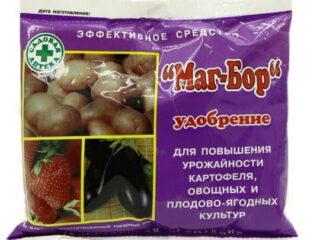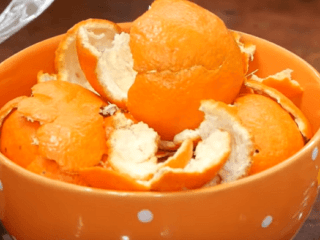Content
- 1 Is it possible to water seedlings with vermicompost?
- 2 Composition and description of biohumus for seedlings
- 3 Release forms
- 4 Advantages and disadvantages
- 5 When to water seedlings with vermicompost
- 6 How to dilute liquid vermicompost to feed seedlings
- 7 How to feed vegetable seedlings with biohumus
- 8 How much biohumus to add to the soil for seedlings
- 9 Precautionary measures
- 10 Analogs and combination
- 11 Conclusion
- 12 Reviews from summer residents about the use of biohumus for seedlings
Liquid biohumus for tomato and pepper seedlings is used as a complex fertilizer for various crops. It can be used for seedlings, as they need increased nutrition for rapid growth. How to obtain the solution and how often to water the plants is described in the article.
Is it possible to water seedlings with vermicompost?
Vermicompost is a liquid product, the main ones (up to 30% of the mass fraction) are organic acids, including humic, fulvic and amino acids. Contains microelements that stimulate root formation processes.
Vermicompost is often used for garden plants, so the question arises as to whether it can be used for seedlings. The answer is definitely positive - the product is also useful for germinating seeds. However, it is worth keeping in mind that the concentration of biohumus for seedlings needs to be slightly reduced.It is important to follow the recommendations described below.
Thanks to the use of the liquid product, the immunity of the seedlings is strengthened. This is important for further transplantation both in open ground and in a greenhouse. Plants suffer less from root rot, powdery mildew and other infections. Productivity increases, the content of proteins and carbohydrates in fruits increases, which improves their taste.
Composition and description of biohumus for seedlings
The basis of biohumus for seedlings are organic substances:
- amino acids;
- humic acids;
- B vitamins (B1, B3 and B12);
- complex carbohydrates (polysaccharides);
- fulvic acids;
- hydroxycarboxylic organic acids.
However, the composition of liquid biohumus for seedlings is not limited to this. The product also contains other valuable components:
- nitrogen;
- phosphorus in the form of oxide;
- calcium;
- potassium;
- phosphorus;
- boron;
- magnesium;
- cobalt;
- copper;
- molybdenum;
- zinc;
- manganese.

Biohumus contains organic acids and mineral components
Release forms
The drug is available in the following forms:
- Dry in the form of granules - scattered over the surface, used for plants in open and closed ground. But this option is not suitable for seedlings.
- The liquid product is best used for seedlings. It can be watered at the root, sprayed on the soil surface or leaves, or soaked in seeds.
- Less common is gel-like biohumus for seedlings, for example, the drug “Florizel”. Unlike a liquid product, it is packaged in small containers, for example, a doypack. It is economical in consumption and easy to use.
Each drug, including in liquid form, has its own expiration date. As a rule, it is no more than three years.Should be stored in a dark, dry place at almost any temperature. Even if the liquid solution is frozen in winter, it will not lose its properties.
Advantages and disadvantages
Liquid biohumus is usually used for garden plants, although it can also be used for seedlings. The advantages are obvious:
- helps reduce stress for seedlings when transplanting to a permanent location;
- helps increase productivity;
- increases the shelf life of fruits;
- strengthens the immunity of seedlings, which helps it take root in a new area and protects it from diseases;
- stimulates the formation of the ovary and increases the amount of harvest;
- serves as a prevention of premature shedding;
- reduces the content of heavy metals and other hazardous substances in the soil;
- improves taste.
However, it is worth considering that liquid biohumus for seedlings also has disadvantages:
- the fertilizer is not suitable for foliar feeding - it is used mainly for watering (however, in the case of a severe lack of microelements, yellowing can also be applied to the leaf);
- should not be used for indoor plants, as it leads to the proliferation of midges, which will later be difficult to get rid of.

Fertilizer strengthens plant immunity and increases productivity
When to water seedlings with vermicompost
Liquid biohumus for seedlings is used in three ways:
- Watering.
- Foliar treatment.
- Soaking seeds.
Most often in practice, the first option is observed - the plants are watered at the root or the soil surface is thoroughly sprayed so as not to wash away the seeds.
The schedule for using the liquid drug is as follows:
- Soaking seeds.
- Water after a couple of true leaves appear.
- Feeding after picking.
- The last watering is given 10-12 days after this.
Particular attention should be paid to soaking the seeds in a liquid product. The duration directly depends on the specific culture. In most cases, the seeds are soaked for 6-12 hours.
But for onions, peppers, melon, parsley, cucumbers, dill and carrots you need to wait a day. In the case of tubers and bulbs, 30 minutes is enough - do not soak longer.
How to dilute liquid vermicompost to feed seedlings
Liquid biohumus can simply be diluted with water. It is better to first let the liquid sit for several hours, and then proceed as follows:
- Measure out the required amount of product, for example, 5 ml. To do this, use measuring utensils, since it will not be possible to achieve such accuracy with a spoon.
- Prepare 1 liter of water. It should be settled and at room temperature.
- Dissolve the product in water and mix thoroughly.
- Then pour it into a spray bottle and spray it on the leaf or surface of the soil. If necessary, water the seedlings at the roots.
How to feed vegetable seedlings with biohumus
Biohumus for seedlings contains quite a lot of nutrients, so it must be used strictly according to the instructions. The product is diluted in water until the required concentration is obtained, and then processing begins. Moreover, it is worth considering the features of application depending on the specific crop.

In most cases, seedlings are fed by the root method, i.e. watering
Feeding tomato seedlings with vermicompost
Often you have to use vermicompost for tomato seedlings.A solution of standard concentration 5 ml per 1 liter is suitable for watering. However, if it is necessary to treat the leaf, then dissolve 5 ml in 4 liters, i.e. diluted four times. Since such a large volume is not always needed, you can simply measure 1.2 ml and dissolve in 1 liter.
Feeding pepper seedlings with vermicompost
You can also feed pepper seedlings with vermicompost. To do this, prepare a solution of the same concentration of 5 ml per 1 liter. It is used for watering 1 m2 area. For leaf treatment, you can use a solution with a concentration of 5 ml per 4 liters. If it is necessary to soak the seeds of pepper seedlings in a liquid preparation, the concentration is increased to 5-10 ml per 700 ml of water or 15 ml of product per 1 liter.
Liquid biohumus for cucumber seedlings
It is allowed to use liquid vermicompost for the garden and for cucumber seedlings. Prepare a solution in a volume of 5 ml per 1 liter, mix and water or spray over the surface. If the seedlings do not grow well, you can carry out foliar treatment by first diluting the standard solution four times.
How much biohumus to add to the soil for seedlings
As already mentioned, the drug is produced not only in liquid, but also in dry form. The latter is convenient to use for preliminary preparation of the soil in which seedlings will be grown. The drug is added to it in an amount of 500 g per square meter, after which it is watered generously and waited for several days.
But if you don’t have time, you can also use a liquid product. Prepare a standard solution with a concentration of 5 ml per 1 liter and water the soil. After a few days you can start sowing the seeds.
Precautionary measures
Vermicompost can be added to the soil for seedlings or used as a means of root treatment (watering). The composition is non-toxic, it is safe for humans, plants, and pets. However, it is recommended to take certain precautions:
- Do not allow the solution to get inside. If necessary, take several tablets of activated carbon.
- Avoid contact with eyes - if this happens, rinse them immediately under running water.
- Keep the liquid product out of the reach of children and pets.

Canisters with the drug can be stored in any conditions
Analogs and combination
Vermicompost can be called an organic fertilizer of complex composition. It also contains numerous microelements, which also strengthen the immune system and stimulate the formation of ovaries, thereby increasing productivity.
Therefore, we can say that there are no analogues of the product. Although, in a certain sense, the following preparations for watering seedlings can serve as a replacement:
- potassium humate;
- "Aminozol";
- "BIUD";
- "Flumb";
- "Flora Lux Gold" and others.
5
“BIUD” is one of the analogues of liquid biohumus
Theoretically, the product can be combined with a variety of drugs, including mineral fertilizers. But in practice, such a need does not arise, because Vermicompost contains quite a lot of nutrients of a balanced composition. Moreover, an excess of fertilizers can be more dangerous compared to a deficiency.
Conclusion
Liquid biohumus for tomato and pepper seedlings is suitable not only for these crops. The drug is characterized by low consumption, so even at a high price it justifies itself. The fertilizer can be used 3-4 times before transplanting the seedlings into open ground.Next, they need to be fed with both organic matter and complex mineral compounds.
Reviews from summer residents about the use of biohumus for seedlings








Please tell me, is it possible to use superphosphate together with vermicompost to feed indoor hot peppers?
Good afternoon.
You cannot combine mineral and organic fertilizers. This will not benefit the plants.
Our recommendation: use vermicompost to feed indoor peppers if the plant is in an active growth stage, before flowering. But superphosphate must be fed at the initial stage of fruit formation.